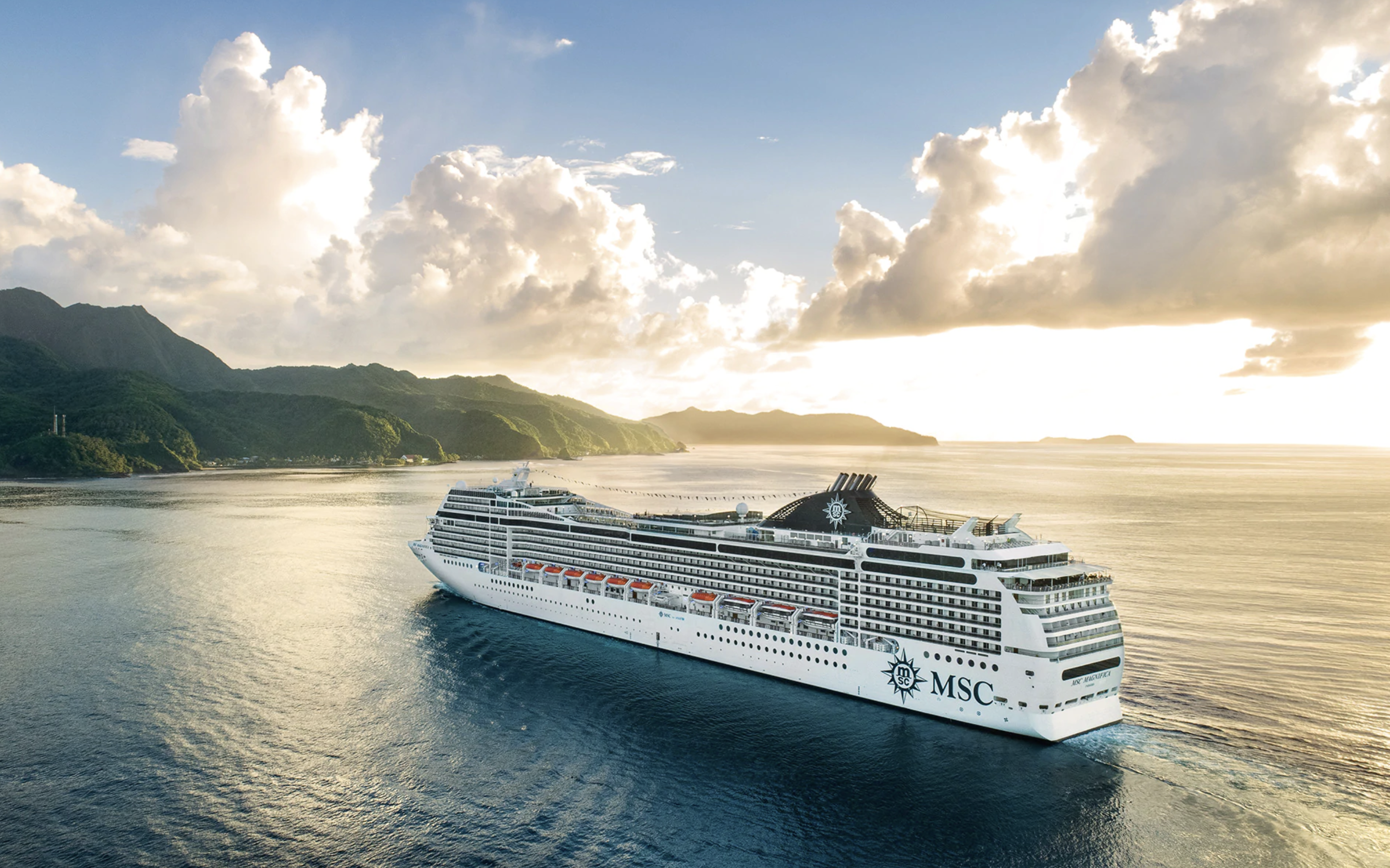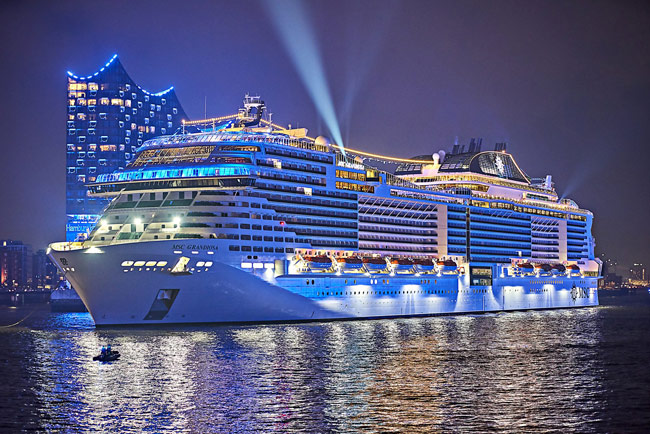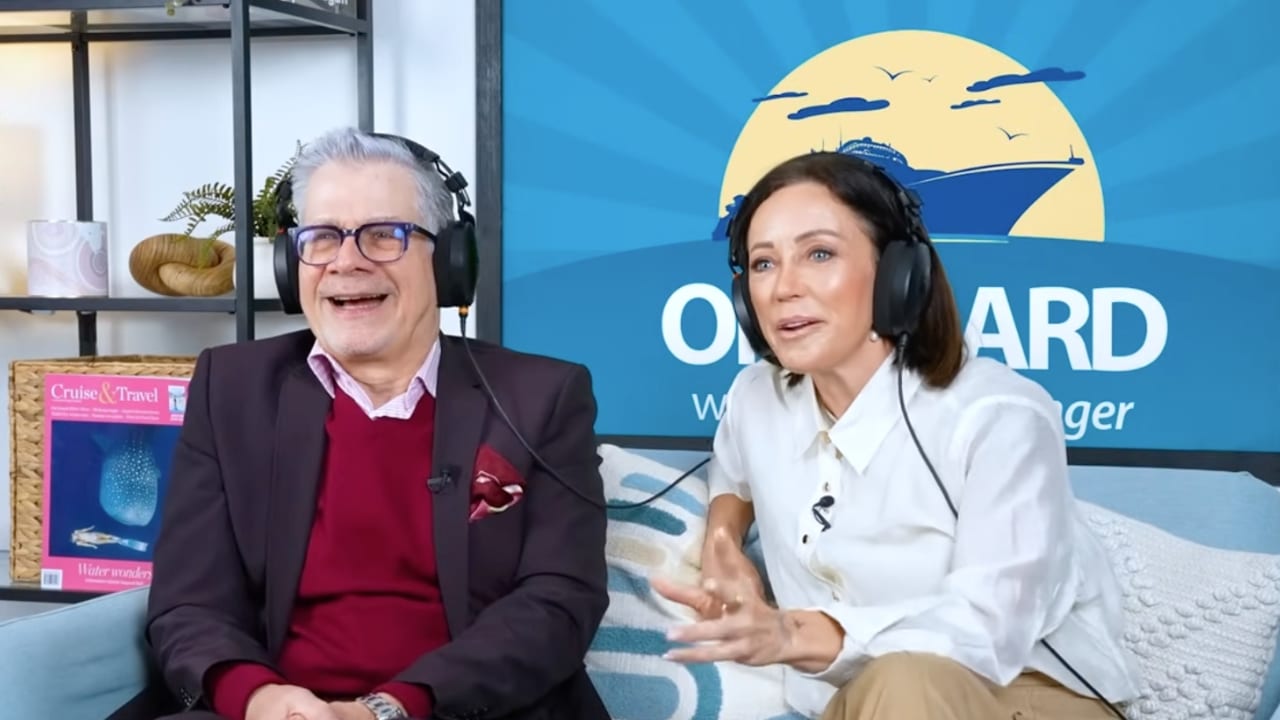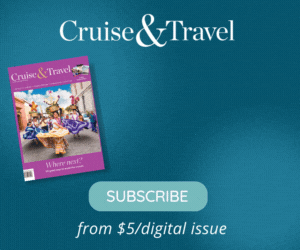European sailings by big ship lines such as MSC and Costa are seen as critical tests for the cruise industry’s ability to handle COVID-19.
Cruise lines have cited the success in Europe, where lines have been sailing for six weeks, as a reason why American health authorities should allow cruising to resume in the US.
MSC Cruises chairman Pierfrancesco Vago revealed he had personally engaged with national, regional and local leaders in the maritime, transport and safety industries to inform them what MSC was doing, and to answer their questions and make them feel comfortable.
“It was an incredible job,” Mr Vago said. “I did it in Italy, I did it in Malta, I did it in Greece” – the countries where MSC is now sailing.
In addition, Mr Vago also visited and held talks in Spain, France, Belgium and Northern European countries.
He added that MSC is eager to return to North America and the Caribbean – “now that we believe, and especially now that we demonstrate that the resumption of cruising can take place in a safe and healthy way.”
Mr Vago was speaking at a press conference after Cruise Lines International Association (CLIA) global board approved mandatory health/safety protocols for member lines and submitted them to the US Centers for Disease Control and Prevention (CDC).
It is hoped, this could pave the way for CDC to lift its “No Sail Order” and cruising would resume in US ports.
Highlights of the protocols are:
- 100% testing of passengers and crew for COVID-19 prior to embarkation.
- Mask-Wearing. Mandatory wearing of masks by all passengers and crew onboard and during excursions whenever physical distancing cannot be maintained
- Physical distancing in terminals, onboard ships, on private islands and during shore excursions
- Air management and ventilation strategies to increase fresh air onboard and, where feasible, using enhanced filters and other technologies to mitigate risk
- Medical Capability: Risk based response plans tailored for each ship to manage medical needs, dedicated cabin capacity allocated for isolation and other operational measures, and advance arrangements with private providers for shoreside quarantine, medical facilities, and transportation.
- Shore Excursions: Only permit shore excursions according to the cruise operators’ prescribed protocols, with strict adherence required of all passengers and denial of re-boarding for any passengers that do not comply.
MSC Grandiosa was the first line to sail from Italian ports in the Mediterranean in mid-August, followed by MSC Magnifica in late August. Both cruises only sailed with passengers who were residents of Europe’s Schengen Zone of 26 European countries.

Costa Cruises restarted operations from Italian ports earlier this month starting with Costa Deliziosa from Trieste to various ports in Greece. This was followed by Costa Diadema on 19 September, offering seven-night cruises in Western Mediterranean from Genoa to ports in Italy and Malta.

SeaDream Yacht Club said it will resume sailings in the Caribbean in November offering seven-day itineraries from Barbados.
Arnold Donald, President and CEO of Carnival Corporation said: “We are on a path – in collaboration with and in approval with regulators and destinations – to resume guest cruise operations in the US.
“Paramount is protecting health, safety and wellbeing of guests, crew, shoreside employees and people in the places/communities that cruise ships visit, a commitment reflected in the health and safety protocols submitted by CLIA to the CDC.”
He said that Costa Cruises return to cruising in the Mediterranean will be shared with other Carnival brand ships. Next to restart is Carnival’s German brand AIDA to resume sailing on 17 October visiting Italian ports. In November, the ship will sail to the Canary Islands and by December two ships will sail in Western Mediterranean and to the United Arab Emirates.
Frank Del Rio, President and CEO of Norwegian Cruise Line Holdings said: “Resumption of worldwide service, and in particular in the United States, is the single most important challenge that the cruise industry has ever faced.
“This challenge is very personal to me. When I think about resuming cruise operations, I think about my elderly mother and of my young grandchildren being onboard and making sure that all the necessary protocols and arrangements are in place to keep them safe and to mitigate any risk, while still delivering a great cruise vacation and experience.
“Confidence in health and safety is what matters to my family. It’s what matters to all families everywhere.”
He said CLIA’s submission to the CDC is “one of the strongest, if not, the strongest health protocols of any industry.”
Richard Fain, Chairman and CEO of Royal Caribbean Group said the collaborative work by RCL and NCL and the submission of the mandatory health and safety protocols to the CDC was “a transparent way to support a pathway for resumption of cruising from US ports.”
“We said we wouldn’t start until we were ready but we think that the science has advanced and the technology has advanced to a point where we can safely proceed forward with our objective of giving the best experiences in the world in a very safe and controlled environment,” Mr Fain said.
Adam Goldstein, CLIA’s global chair said once CDC lifts its “No Sail Order”, cruise lines could start operations from US ports in a “phased, sequential start-up of operations.”








